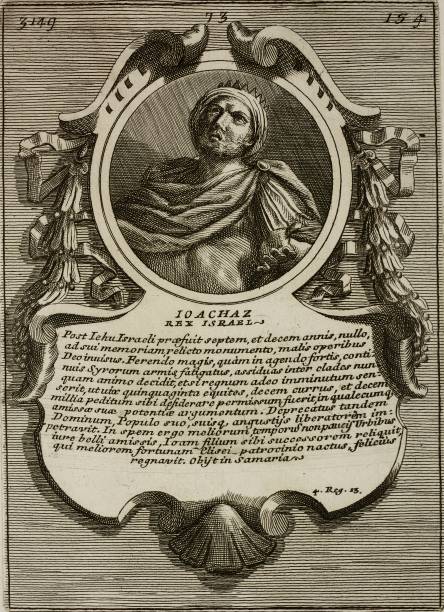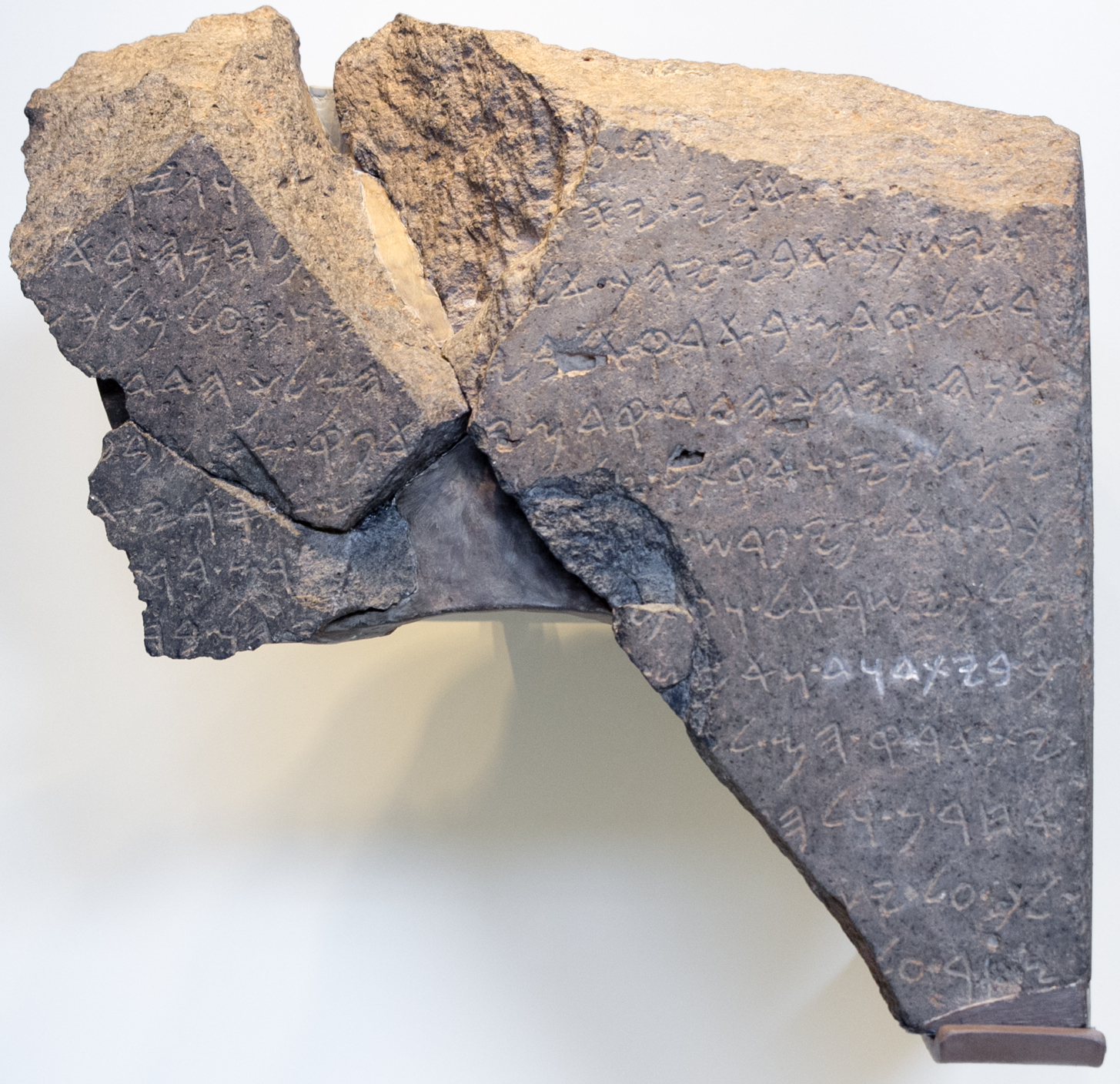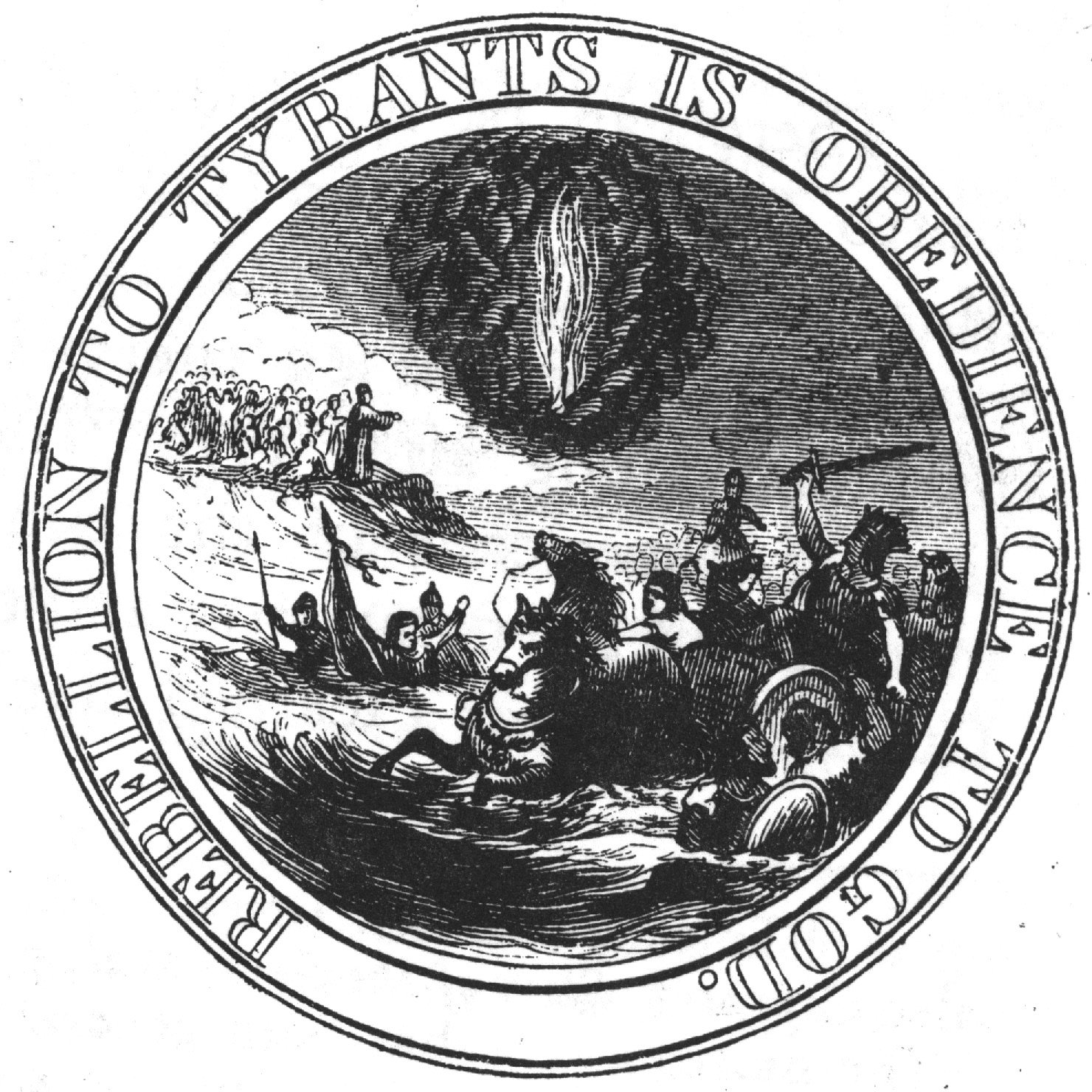|
Jehoahaz Of Israel
Jehoahaz II of Israel ( ''Yəhō’āḥāz'', meaning "Yahweh has held"; ) was the eleventh king of Israel and the son of Jehu ('' 2 Kings'' 10:35; 13:1). He reigned for seventeen years. History William F. Albright dated his reign to 815–801 BC, while E. R. Thiele offered the dates 814–798 BC. Biblical narrative The account in 2 Kings states that he did evil in the sight of Yahweh, and his people followed the religious practices of the house of Jeroboam, which included the worship of a cultic pole of Asherah in Samaria. The kings of the Arameans, Hazael and Ben-hadad, prevailed over him (2 Kings 13:1–3). Jehoahaz besought the Lord for a deliverer to relieve Israel from Aramean oppression, and He provided a savior for Israel, who is not named.''Jewish Encyclopedia''"Jehoahaz"/ref> The Arameans were defeated, but this left Jehoahaz with an army reduced to 50 horsemen, 10 chariots and 10,000 foot soldiers. Identity of the deliverer 2 Kings 13:25 suggests that Jehoahaz ... [...More Info...] [...Related Items...] OR: [Wikipedia] [Google] [Baidu] |
Guillaume Rouillé
__NOTOC__ Guillaume Rouillé (; ; 15041589), also called Roville or Rovillius, was one of the most prominent Humanism, humanist bookseller-Printer (publishing), printers in 16th-century Lyon. He invented the pocket book format called the ''sextodecimo'', printed with sixteen leaves to the folio sheet, half the size of the octavo format, and published many works of history and poetry as well as medicine, in addition to his useful compilations and handbooks. Rouillé was born in Tours. Though he was a Frenchman, he served his apprenticeship in the Venice, Venetian printing-house of Gabriele Giolito de' Ferrari, and retained his connections with Venice as a source of texts after his arrival in Lyon around 1543. Among his works was the French translation by Barthélemy Aneau of Andrea Alciato's pioneering emblem book, which formed part of a major publishing venture in Lyons by the team of Guillaume Rouillé and his printer Macé Bonhomme, 1549, which extended to translations in Itali ... [...More Info...] [...Related Items...] OR: [Wikipedia] [Google] [Baidu] |
Hazael
Hazael (; ; Old Aramaic 𐤇𐤆𐤀𐤋 ''Ḥzʔl'') was a king of Aram-Damascus mentioned in the Bible. Under his reign, Aram-Damascus became an empire that ruled over large parts of contemporary Syria and Israel-Samaria. While he was likely born in the greater Damascus region of today, his place of birth is unknown, with both Bashan and the Beqaa Valley being favoured by different historians. In the Bible Hazael is first mentioned by name in . God tells Elijah the prophet to anoint Hazael king of Syria. Years after this, the Syrian king Ben-Hadad II, probably identical to the Hadadezer mentioned in the Tel Dan stele, was ill and sent his court official Hazael with gifts to Elijah's successor, Elisha. Elisha told Hazael to tell Hadadezer that he would recover and revealed to Hazael that the king would recover but would be assassinated. He also predicted that Hazael would commit atrocities against the Israelites. Hazael denies that he is capable of perpetrating such deeds ... [...More Info...] [...Related Items...] OR: [Wikipedia] [Google] [Baidu] |
9th-century BCE Kings Of Israel
The 9th century was a period from 801 (represented by the Roman numerals DCCCI) through 900 (CM) in accordance with the Julian calendar. The Carolingian Renaissance and the Viking raids occurred within this period. In the Middle East, the House of Wisdom was founded in Abbasid Baghdad, attracting many scholars to the city. The field of algebra was founded by the Muslim polymath al-Khwarizmi. The most famous Islamic scholar Ahmad ibn Hanbal was tortured and imprisoned by Abbasid official Ahmad ibn Abi Du'ad during the reign of Abbasid caliph al-Mu'tasim and caliph al-Wathiq. In Southeast Asia, the height of the Mataram Kingdom happened in this century, while Burma would see the establishment of the major kingdom of Pagan. Tang China started the century with the effective rule under Emperor Xianzong of Tang, Emperor Xianzong and ended the century with the Huang Chao#Rebellions, Huang Chao rebellions. In America, the Maya civilization, Maya experienced widespread Classic Maya coll ... [...More Info...] [...Related Items...] OR: [Wikipedia] [Google] [Baidu] |
Jehoash Of Judah
Jehoash (; ; ), also known as Joash (in King James Version), Joas (in Douay–Rheims) or Joás (), was the eighth king of Judah, and the sole surviving son of Ahaziah after the massacre of the royal family ordered by his grandmother, Athaliah. His mother was Zibiah of Beersheba. Jehoash was 7 years old when he ascended to the throne, reigning for 40 years. ( 2 Kings 12:1, 2 Chronicles 24:1) He was succeeded by his son, Amaziah of Judah. He is said to have been righteous "all the days of Jehoiada the priest" () but to have deviated from fidelity to Yahweh after Jehoiada's death (). William F. Albright has dated his reign to 837–800 BCE, while E. R. Thiele offers the dates 835–796 BCE. Early life According to the Hebrew Bible, following the death of his father, Ahaziah, Jehoash was spared from the rampages of Ahaziah's mother, Athaliah, by Jehoash's paternal aunt, Jehosheba, who was married to the high priest, Jehoiada. After hiding him in the Temple fo ... [...More Info...] [...Related Items...] OR: [Wikipedia] [Google] [Baidu] |
Kingdom Of Judah
The Kingdom of Judah was an Israelites, Israelite kingdom of the Southern Levant during the Iron Age. Centered in the highlands to the west of the Dead Sea, the kingdom's capital was Jerusalem. It was ruled by the Davidic line for four centuries. Jews are named after Judah, and primarily descend from people who lived in the region. The Hebrew Bible depicts the Kingdom of Judah as one of the two successor states of the Kingdom of Israel (united monarchy), United Kingdom of Israel, a term denoting the united monarchy under biblical kings Saul, David, and Solomon and covering the territory of Judah and Kingdom of Israel (Samaria), Israel. However, during the 1980s, Biblical minimalism, some biblical scholars began to argue that the archaeological evidence for an extensive kingdom before the late 8th century BCE is too weak, and that the methodology used to obtain the evidence is flawed. In the 10th and early 9th centuries BCE, the territory of Judah might have been limited ... [...More Info...] [...Related Items...] OR: [Wikipedia] [Google] [Baidu] |
Aram-Damascus
Aram-Damascus ( ) was an Arameans, Aramean polity that existed from the late-12th century BCE until 732 BCE, and was centred around the city of Damascus in the Southern Levant. Alongside various tribal lands, it was bounded in its later years by the polities of Assyria to the north, Ammon to the south, and Kingdom of Israel (Samaria), Israel to the west. The compound name "Aram-Damascus" is only found in the Hebrew Bible, where it sometimes also is referred to as simply "Aram" or "Damascus". It is also referred to as "Aram" in some Aramaic inscriptions. In Assyrian sources, "Aram" was never used to designate it. It was often referred to as "Damascus" or "imērīšu" (meaning "his donkey"), and sometimes "Bīt-Ḫaza’ili" (meaning "house of Hazael"), in Assyrian sources. History The Tanakh gives accounts of Aram-Damascus' history, mainly in its interaction with History of ancient Israel and Judah, Israel and Judah. There are biblical texts referencing battles that took place b ... [...More Info...] [...Related Items...] OR: [Wikipedia] [Google] [Baidu] |
Adad-nirari III
Adad-nīrārī III (also Adad-nārārī, meaning "Adad (the storm god) is my help") was a King of Assyria from 811 to 783 BC. Family Adad-nīrārī was a son and successor of king Shamshi-Adad V, and was apparently quite young at the time of his accession, because for the first five years of his reign, his mother Shammuramat was highly influential, which has given rise to the legend of Semiramis. It is widely rejected that his mother acted as regent, but she was surprisingly influential for the time period.''Ancient Near Eastern History and Culture'' by William H. Stiebing Jr. He was the father of kings Ashur-nirari V, Shalmaneser IV, and Ashur-dan III. Tiglath-Pileser III described himself as a son of Adad-nīrārī in his inscriptions, but it is uncertain if this is true. Biography Adad-nīrārī's youth, and the struggles his father had faced early in his reign, caused a serious weakening of Assyrian rulership over their indigenous Mesopotamia, and made way for the ... [...More Info...] [...Related Items...] OR: [Wikipedia] [Google] [Baidu] |
Pulpit Commentary
The ''Pulpit Commentary'' is a homiletic commentary on the Bible first published between 1880 and 1919 Vol. 4 at Barnes & Noble. Accessed 28 Feb 2024. and created under the direction of Rev. Joseph S. Exell and Henry Donald Maurice Spence-Jones. It consists of 23 volumes with 22,000 pages and 95,000 entries, and was written over a 30-year period with 100 contributors. Rev. Joseph S. Exell M.A. served as the editor of ''Clerical World'', ''The Homiletical Quarterly'' and the ''Monthly Interpreter''. Exell was also the editor for several other large commentary sets like ''The ... [...More Info...] [...Related Items...] OR: [Wikipedia] [Google] [Baidu] |
Jeroboam II
Jeroboam II (, ''Yāroḇʿām''; ; ), also referred to as Jeroboam son of Jehoash, was the successor of Jehoash (alternatively spelled Joash) and the thirteenth king of the ancient Kingdom of Israel, over which he ruled for forty-one years in the eighth century BC. His reign was contemporary with those of Amaziah and Uzziah, kings of Judah. Jeroboam is the fourth king of the House of Jehu and the longest-reigning king of the kingdom of Israel in Samaria. He is described as a military commander who fought Syria. History William F. Albright has dated his reign to 786–746 BC, while E. R. Thiele says he was coregent with Jehoash 793 to 782 BC and sole ruler 782 to 753 BC. He extended Israel to its former limits, from "the entering of Hamath to the sea of the plain". In 1910, G. A. Reisner found sixty-three inscribed potsherds while excavating the royal palace at Samaria, which were later dated to the reign of Jeroboam II and mention regnal years extending from the ninth to ... [...More Info...] [...Related Items...] OR: [Wikipedia] [Google] [Baidu] |
Cambridge Bible For Schools And Colleges
The Cambridge Bible for Schools and Colleges is a biblical commentary set published in 56 volumes by Cambridge University Press between 1878 and 1918. Many volumes went through multiple reprintings, while some volumes were also revised, usually by another author, from 1908 to 1918. Early volumes used the Authorised Version as the base text. Later volumes, and several of the revised editions, instead used the Revised Version, which had appeared in three stages 1881-1894. Anglican bishop John Perowne was the general editor, with A. F. Kirkpatrick the editor for the Old Testament and Apocrypha, and Reginald St John Parry for the New Testament. The first section published was written by theologian Edward Hayes Plumptre in 1878 and covered the Epistle of St. James; the last volumes to appear, in 1918, were Deuteronomy by Sir George Adam Smith, and the revised edition of Joshua Joshua ( ), also known as Yehoshua ( ''Yəhōšuaʿ'', Tiberian Hebrew, Tiberian: ''Yŏhōšuaʿ, ... [...More Info...] [...Related Items...] OR: [Wikipedia] [Google] [Baidu] |
Jerusalem Bible
''The Jerusalem Bible'' (JB or TJB) is an English translation of the Bible published in 1966 by Darton, Longman & Todd. As a Catholic Bible, it includes 73 books: the 39 books shared with the Hebrew Bible, along with the seven deuterocanonical books, as the Old Testament, and the 27 books shared by all Christians as the New Testament. It also contains copious footnotes and introductions. For roughly half a century, the Jerusalem Bible has been the basis of the lectionary for Mass used in Catholic worship throughout much of the English-speaking world outside of North America, though in recent years various bishops' conferences have begun to transition to newer translations, including the English Standard Version, Catholic Edition, in the United Kingdom and India and the Revised New Jerusalem Bible in Australia, New Zealand, and Ireland. History In 1943 Pope Pius XII issued an encyclical letter, '' Divino afflante Spiritu'', which encouraged Catholics to translate the scr ... [...More Info...] [...Related Items...] OR: [Wikipedia] [Google] [Baidu] |
Geneva Bible
The Geneva Bible, sometimes known by the sobriquet Breeches Bible, is one of the most historically significant translations of the Bible into English, preceding the Douay Rheims Bible by 22 years, and the King James Version by 51 years. It was the primary Bible of 16th-century English Protestantism and was used by William Shakespeare, Oliver Cromwell, John Knox, John Donne and others. It was one of the Bibles taken to America on the ''Mayflower'' (Pilgrim Hall Museum has collected several Bibles of ''Mayflower'' passengers), and its frontispiece inspired Benjamin Franklin's design for the first Great Seal of the United States. The Geneva Bible was used by many English Dissenters, and it was still respected by Oliver Cromwell's soldiers at the time of the English Civil War, in the booklet '' The Souldiers Pocket Bible''. Because the language of the Geneva Bible was more forceful and vigorous, most readers strongly preferred this version to the Great Bible. In the words of Cl ... [...More Info...] [...Related Items...] OR: [Wikipedia] [Google] [Baidu] |




